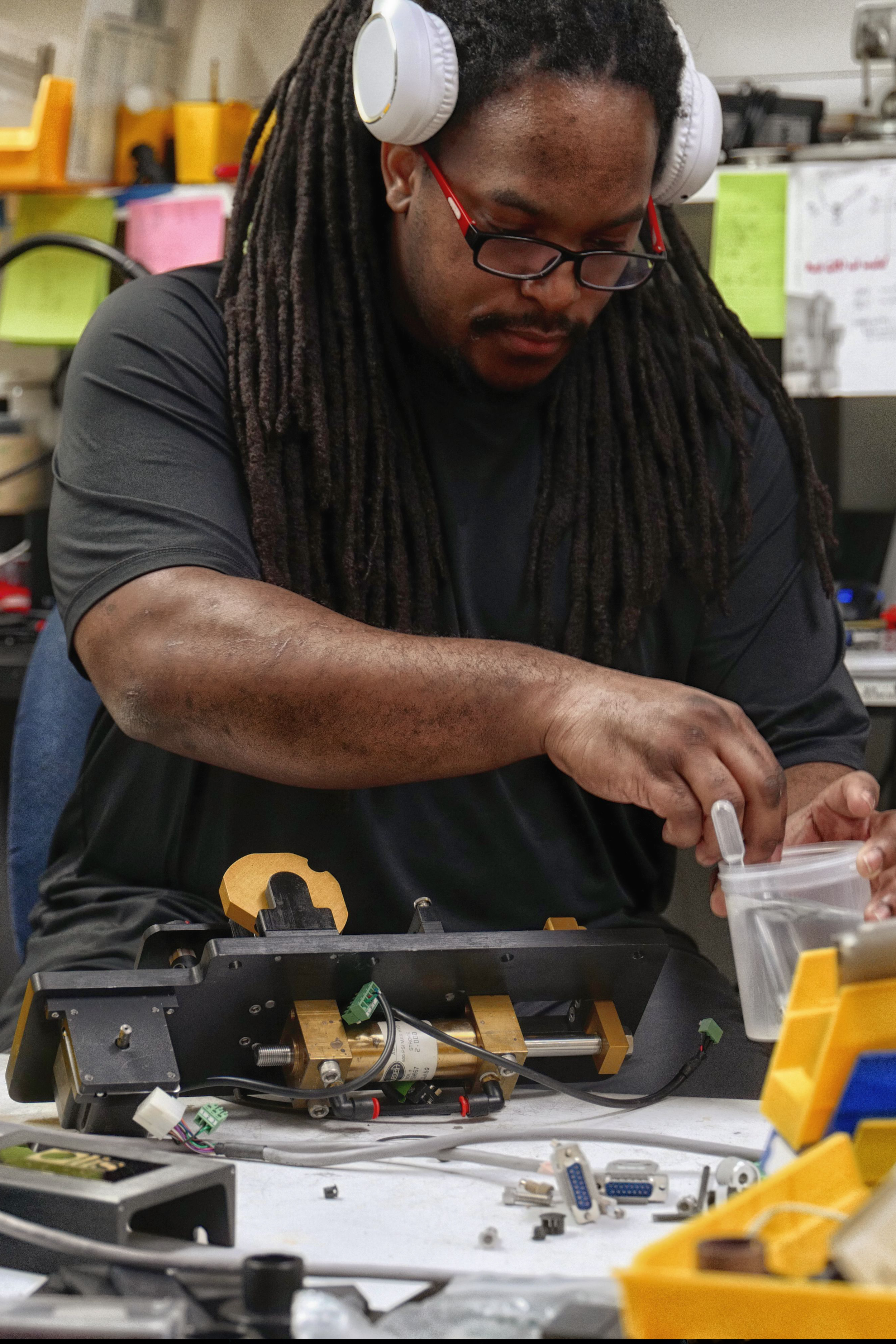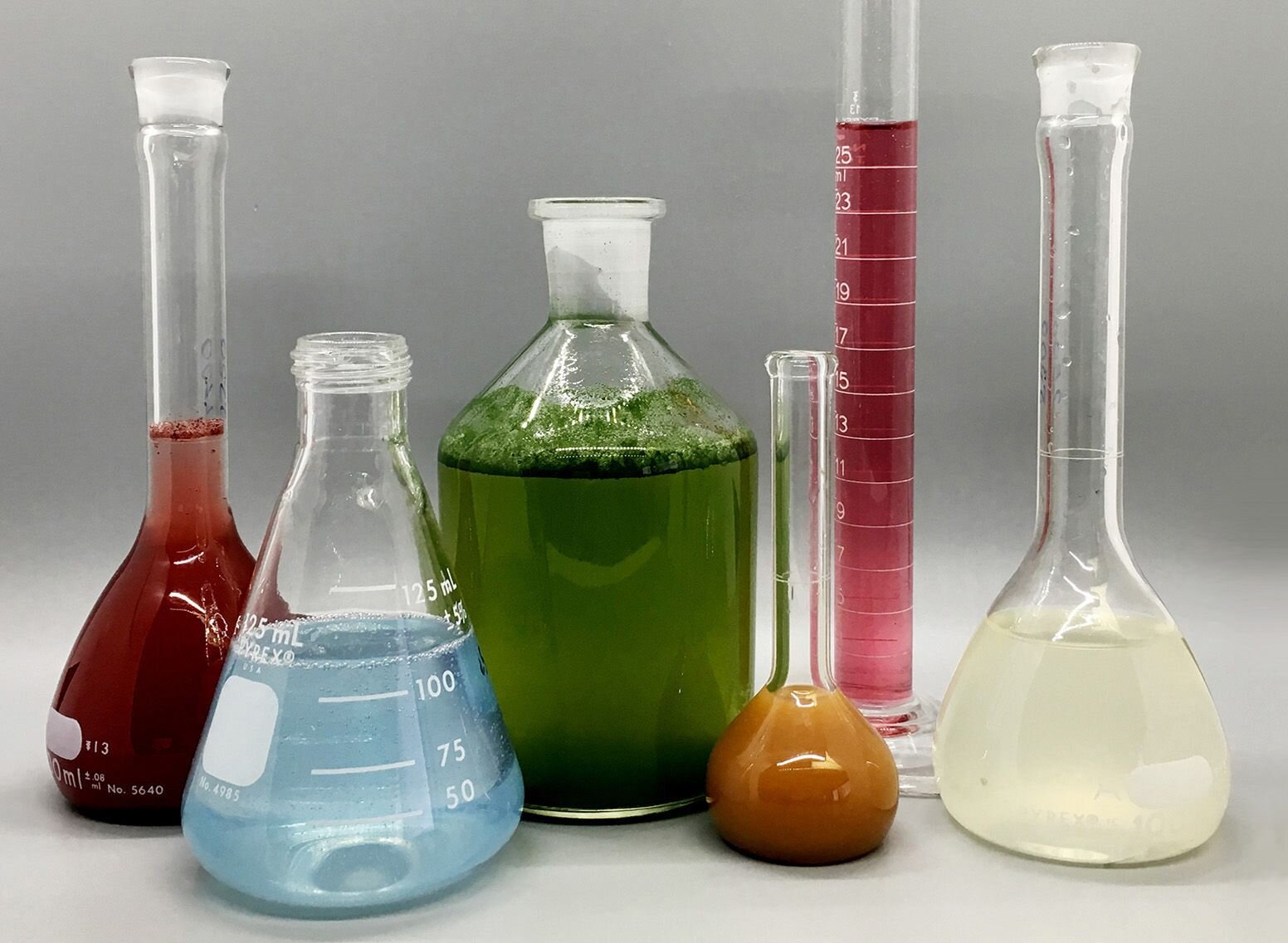The Best Strategy To Use For Circular Dichroism
The Best Strategy To Use For Circular Dichroism
Blog Article
Getting My Circularly Polarized Luminescence To Work
Table of ContentsCircularly Polarized Luminescence Fundamentals ExplainedThe Single Strategy To Use For Circular DichroismUv/vis/nir for DummiesTop Guidelines Of Circular DichroismGet This Report about SpectrophotometersNot known Factual Statements About Uv/vis Top Guidelines Of Circular DichroismSome Of SpectrophotometersSome Known Questions About Circular Dichroism.The Only Guide to SpectrophotometersUv/vis/nir Can Be Fun For EveryoneWhat Does Uv/vis Do?Little Known Facts About Uv/vis/nir.
It is then scanned through the sample and the reference solutions. Fractions of the incident wavelengths are transferred through, or shown from, the sample and the recommendation. Electronic circuits transform the relative currents into linear transmission portions and/or absorbance/concentration values.The transmission of a reference substance is set as a baseline (information) worth, so the transmission of all other compounds are recorded relative to the preliminary "zeroed" substance. The spectrophotometer then transforms the transmission ratio into 'absorbency', the concentration of specific elements of the test sample relative to the preliminary compound.
Since samples in these applications are not readily offered in large amounts, they are especially fit to being examined in this non-destructive strategy. In addition, valuable sample can be saved by making use of a micro-volume platform where just 1u, L of sample is required for total analyses. A short description of the procedure of spectrophotometry consists of comparing the absorbency of a blank sample that does not contain a colored substance to a sample that contains a colored substance.
Circular Dichroism for Beginners
In biochemical experiments, a chemical and/or physical residential or commercial property is selected and the procedure that is used is particular to that home in order to derive more details about the sample, such as the quantity, purity, enzyme activity, etc. Spectrophotometry can be used for a variety of techniques such as figuring out ideal wavelength absorbance of samples, determining optimal p, H for absorbance of samples, identifying concentrations of unknown samples, and identifying the p, Ka of different samples.: 21119 Spectrophotometry is also a valuable procedure for protein filtration and can also be utilized as an approach to produce optical assays of a substance.
It is possible to understand the concentrations of a two component mix utilizing the absorption spectra of the standard services of each component. To do this, it is necessary to understand the termination coefficient of this mixture at 2 wave lengths and the termination coefficients of solutions which contain the recognized weights of the 2 parts.

Circularly Polarized Luminescence Can Be Fun For Anyone
Area. The concentration of a protein can be approximated by determining the OD at 280 nm due to the existence of tryptophan, tyrosine and phenylalanine.
This approach requires a spectrophotometer capable of determining in the UV region with quartz cuvettes.: 135 Ultraviolet-visible (UV-vis) spectroscopy involves energy levels that delight electronic shifts. Absorption of UV-vis light excites particles that are in ground-states to their excited-states.
20. 8 O.D. Ink makers, printing companies, textiles suppliers, and lots of more, require the information provided through colorimetry. They take readings in the region of every 520 nanometers along the noticeable region, and produce a spectral reflectance curve or a data stream for alternative presentations. These curves can be used to evaluate a new batch of colorant to examine if it makes a match to requirements, e.
What Does Uv/vis/nir Do?
Traditional visible region spectrophotometers can not discover if a colorant or the base product has fluorescence. This can make it challenging to handle color problems if for example one or more of the printing inks is fluorescent. Where a colorant consists of fluorescence, a bi-spectral fluorescent spectrophotometer is utilized (https://hubpages.com/@olisclarity1). There are two significant setups for visual spectrum spectrophotometers, d/8 (spherical) and 0/45.
Researchers utilize this instrument to determine the amount of substances in a sample. In the case of printing measurements 2 alternative settings are typically utilized- without/with uv filter to control better the result of uv brighteners within the paper stock.
The Greatest Guide To Circularly Polarized Luminescence
Some applications need little volume measurements which can be performed with micro-volume platforms. As described in the applications area, spectrophotometry can be utilized in both qualitative and quantitative analysis of DNA, RNA, and proteins. Qualitative analysis can be used and spectrophotometers are utilized to record spectra of compounds by scanning broad wavelength regions to figure out the absorbance residential or commercial properties (the strength of the color) of the compound at each wavelength.

The 45-Second Trick For Circular Dichroism
One major element is the kind of photosensors that are readily available for various spectral regions, but infrared measurement is likewise challenging because practically everything releases IR as thermal radiation, specifically at wavelengths beyond about 5 m. Another complication is that rather a few products such as glass and plastic absorb infrared, making it incompatible as an optical medium.
Samples for IR spectrophotometry may be smeared between two discs of potassium bromide or ground with potassium bromide and pushed into a pellet. Where liquid services are to be determined, insoluble silver chloride is utilized to construct the cell. Spectroradiometers, which run almost like the noticeable region spectrophotometers, are developed to determine the spectral density of illuminants. 2013. p. 13. Allen, DW; Cooksey, C; Tsai, BK (Nov 13, 2009). "Spectrophotometry". Obtained Dec 23, 2018. Ninfa AJ, Ballou DP, Benore M (2010 ). Essential Lab Approaches for Biochemistry and Biotechnology (2nd ed.). Hoboken: Wiley & Sons. ISBN 9780470087664. OCLC 488246403. Schwedt G (1997 ). The essential guide to analytical chemistry.
Oke, J. B.; Gunn, J. E.
Uv/vis/nir Fundamentals Explained

1021/ac50048a728. ISSN0003-2700. Ninfa AJ, Ballou DP, Benore M (2015 ). Fundamental Laboratory Approaches for Biochemistry and Biotechnology (3, rev. ed.). Hoboken, NJ: Wiley & Sons. p. 77. ISBN9780470924525. OCLC915641828. "Fully Automatic Double Beam - Atomic Absorption Spectrophotometer (AA 8000)". Laboratory Devices. Labindia Analytical Instruments Pvt. Ltd. "Spectrophotometry Applications and Basics".
What Does Spectrophotometers Do?
Obtained Jul 4, 2018. Trumbo, Toni A.; Schultz, Emeric; Borland, Michael G.; Pugh, Michael Eugene (April 27, 2013). "Applied Spectrophotometry: Analysis of a Biochemical Mix". Biochemistry and Molecular Biology Education. 41 (4 ): 24250. doi:10. 1002/bmb. 20694. PMID 23625877. (PDF). www. mt.com. Mettler-Toledo AG, Analytical. 2016. Obtained Dec 23, 2018. Cortez, C.; Szepaniuk, A.; Gomes da Silva, L.
"Checking Out Proteins Filtration Methods Animations as Tools for the Biochemistry Teaching". Journal of Biochemistry Education. 8 (2 ): 12. doi:. Garrett RH, Grisham CM (2013 ). Biochemistry. Belmont, CA: Cengage. p. 106. ISBN 978-1133106296. OCLC 801650341. Vacation, Ensor Roslyn (May 27, 1936). "Spectrophotometry of proteins". Biochemical Journal. 30 (10 ): 17951803. doi:10. 1042/bj0301795.
PMID 16746224. Hermannsson, Ptur G.; Vannahme, Christoph; Smith, Cameron L. C.; Srensen, Kristian T.; Kristensen, Anders (2015 ). "Refractive index dispersion noticing using a selection of photonic crystal resonant reflectors". Applied Physics Letters. 107 (6 ): 061101. Bibcode:2015 Ap, Ph, L. 107f1101H. doi:10. 1063/1. 4928548. S2CID 62897708. Mavrodineanu R, Schultz JI, Menis O, eds.
The Basic Principles Of Uv/vis/nir
U.S. Department of Commerce National Bureau of Standards unique publication; 378. Washington, D.C.: U.S. National Bureau right here of Standards.
The procedure begins with a controlled light that lights up the evaluated sample. In the case of reflection, as this light engages with the sample, some is taken in or released. The released light journeys to the detector, which is evaluated, quantified, and presented as industry-standard color scales and indices.
Market governing bodies normally specify specific metrics for particular items, such as Tomato and Coffee indices. The streamlined math looks like this: Where R is the reflection coefficient. All terms are examined over the noticeable spectrum from 400 to 700 nm. When it comes to transmission, when the light communicates with the sample, it is either absorbed, shown, or sent.
Rumored Buzz on Circularly Polarized Luminescence
Examples include APHA (American Public Health Association) for watercolor and pureness analysis, ASTM D1500 for petrochemical color analysis, edible oil indices utilized in food, and color analyses of drinks. All terms are evaluated over the noticeable spectrum from 400 to 700 nm.
Image Credit: Matej Kastelic/ Dr. Arnold J. Beckman and his associates at the National Technologies Laboratories first created the spectrophotometer in 1940. In 1935 Beckman established the business, and the discovery of the spectrophotometer was their most ground-breaking invention.
All about Spectrophotometers
Over time, scientists kept improving the spectrophotometer design to boost its efficiency. The UV abilities of the design B spectrophotometer were improved by replacing the glass prism with a quartz prism.
After 1984, double-beam variations of the device were designed. The addition of external software application with the provision of onscreen displays of the spectra came in the 1990s. Usually, a spectrophotometer is made up of two instruments, namely, a spectrometer and a photometer. A basic spectrophotometer contains a source of light, a monochromator, a collimator for straight light beam transmission, a cuvette to place a sample, and a photoelectric detector.
Spectrophotometers for Beginners
There are various types of spectrophotometers in various sizes and shapes, each with its own function or performance. A spectrophotometer determines how much light is reflected by chemical parts. UV/Vis/NIR. It determines the difference in light strength based on the overall amount of light presented to a sample and the quantity of light beam that travels through the sample service
Based on the instrument's style, the sample is put in between the spectrometer and the photometer. After the light is passed through the sample, the photometer measures its strength and shows the reading. A spectrophotometer is used to figure out the concentration of both colorless and colored solutes in a solution. This instrument is used to figure out the rate of a response.
Report this page